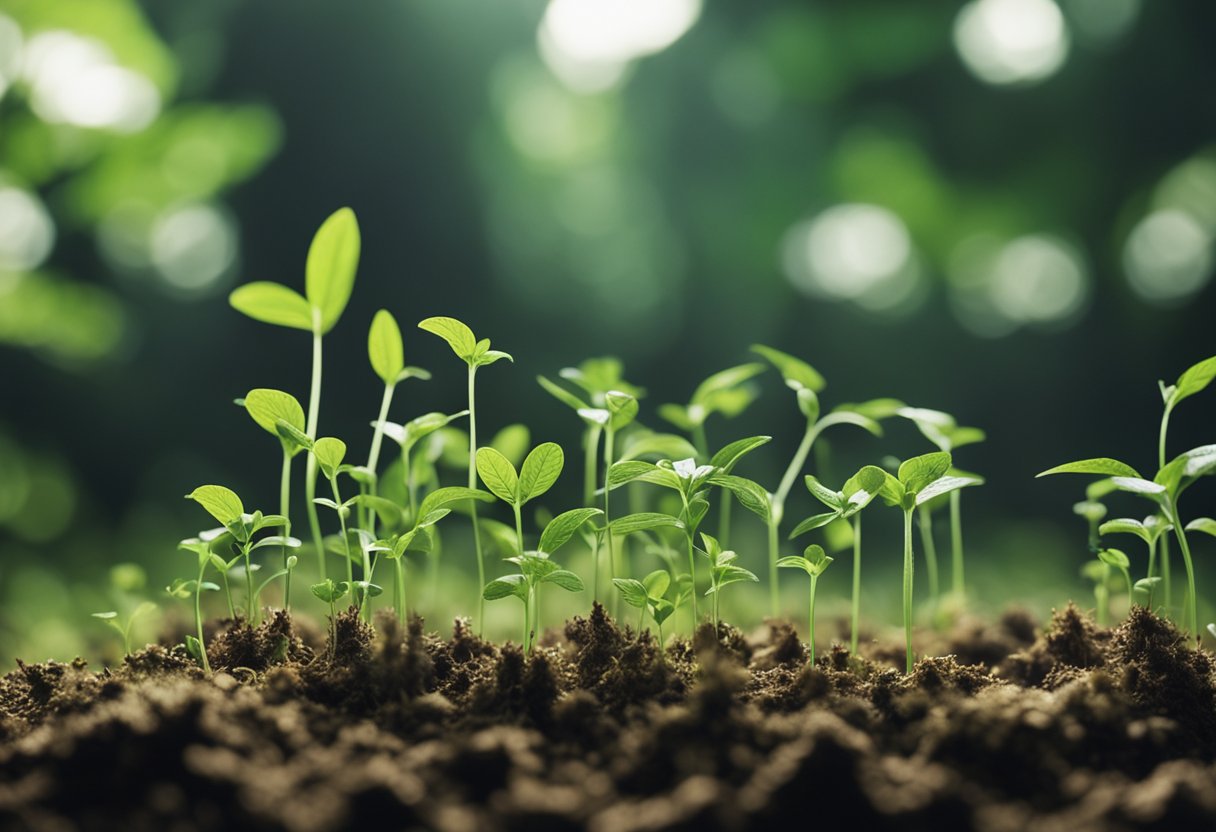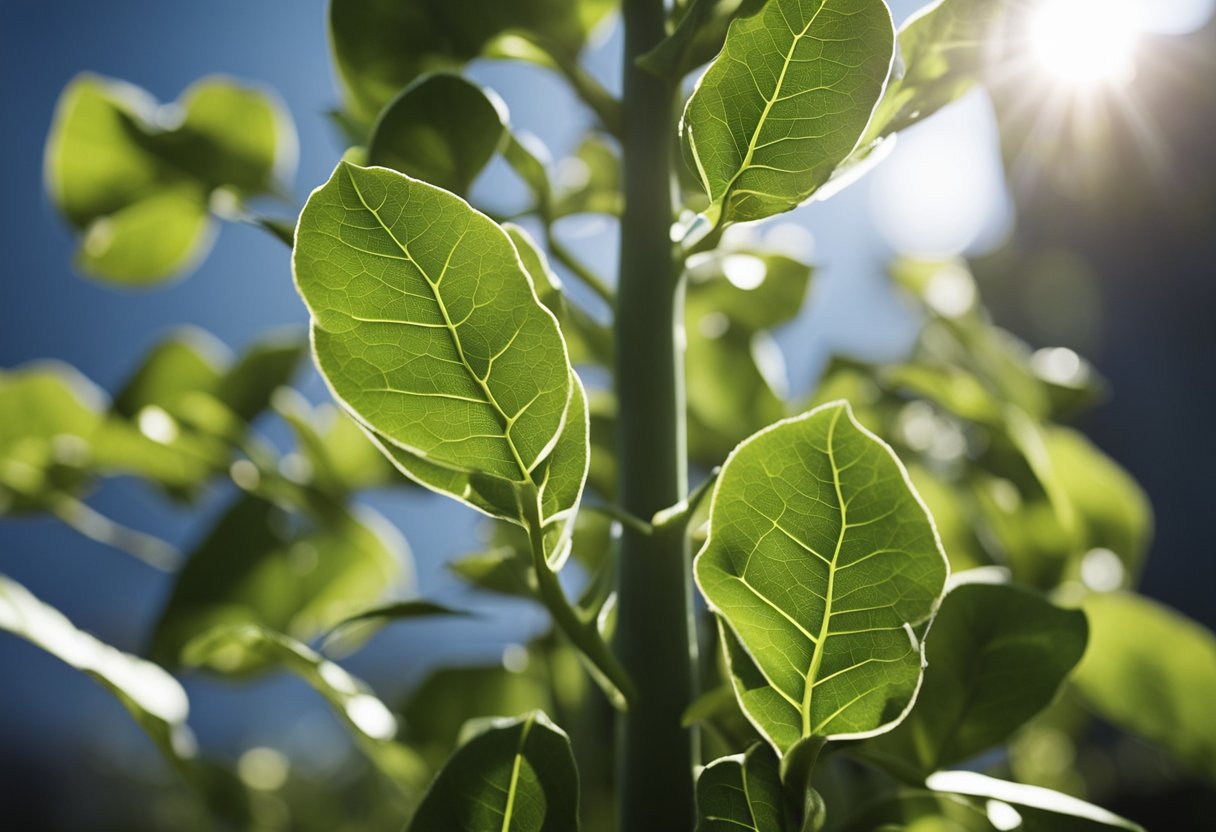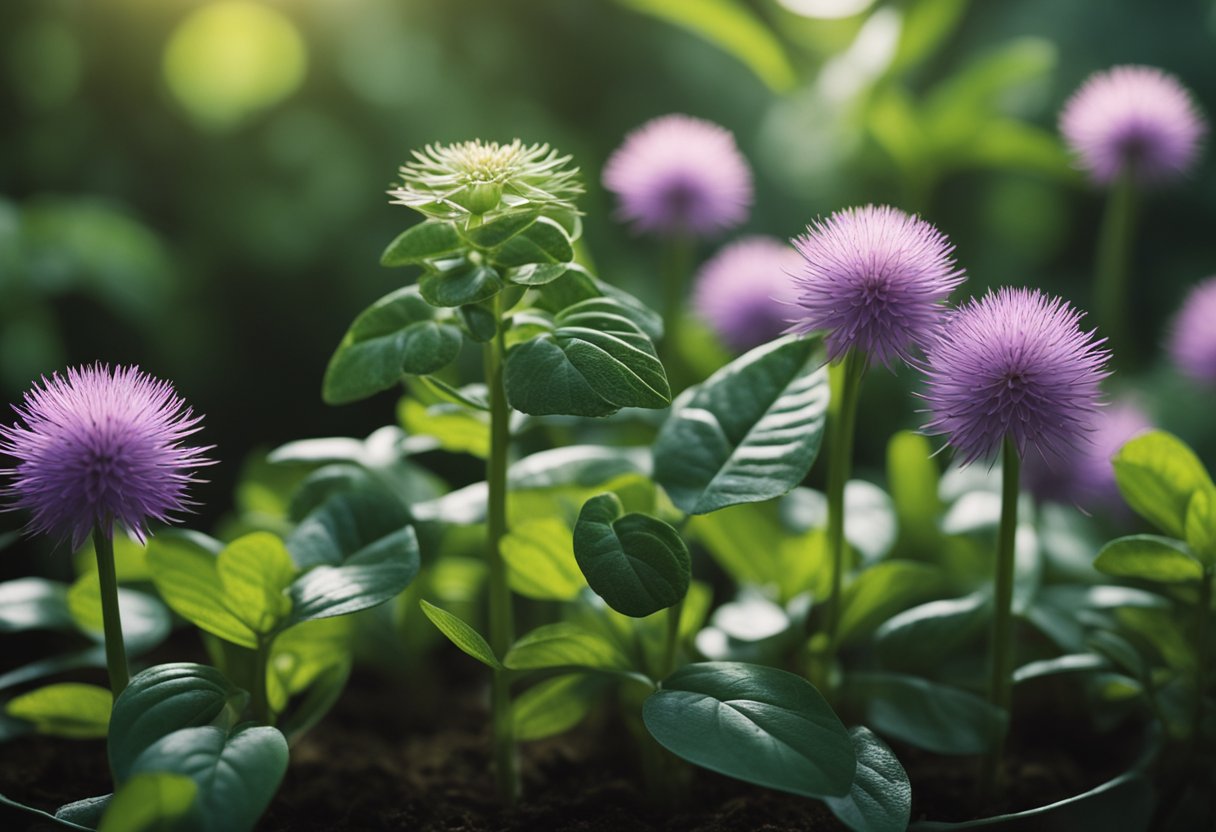As a plant enthusiast, I’ve always been fascinated by the intricate world of plant life. From their ability to photosynthesize to their unique reproductive strategies, plants have always amazed me. However, one question that has always intrigued me is whether plants have brains. This topic has been a subject of debate in the scientific community, with some researchers arguing that plants have cognitive abilities, while others refute this claim. In this article, I aim to explore the science behind plant intelligence and provide a comprehensive understanding of this controversial topic.

To engage the audience, I will be incorporating interactive elements such as quizzes and interactive images throughout the article. These elements will not only make the reading experience more enjoyable but will also help readers test their knowledge on the subject. Additionally, I will be using real-life examples and case studies to further illustrate the practical implications of plant cognition. By doing so, readers will be able to understand the significance of this topic and its potential impact on our daily lives.
In conclusion, this article will provide readers with a clear understanding of the debate surrounding plant intelligence. By incorporating interactive elements and real-life examples, readers will be engaged and informed on this intriguing topic.
The Concept of Plant Intelligence

Defining Plant Cognition
As humans, we tend to associate intelligence with the ability to think, learn, and solve problems. However, when it comes to plants, the concept of intelligence is not as straightforward. In fact, the very definition of plant cognition is a topic of debate among scientists.
At its core, plant cognition refers to the ability of plants to perceive and respond to their environment. This includes processes such as photosynthesis, growth, and reproduction, which require a certain level of awareness and adaptation to external stimuli.
However, some researchers argue that this definition is too broad and that true plant intelligence involves more complex cognitive functions, such as memory, decision-making, and even consciousness.
Historical Perspectives
The idea that plants might possess some form of intelligence is not a new one. In fact, ancient cultures such as the Greeks and the Chinese believed that plants had souls or spirits and could communicate with humans.
In the 20th century, scientists began to explore the concept of plant intelligence more systematically. One of the pioneers in this field was the Indian scientist Jagadish Chandra Bose, who conducted experiments in the early 1900s that demonstrated that plants could respond to various stimuli, such as heat, light, and sound.
Since then, numerous studies have been conducted to investigate the cognitive abilities of plants, with some researchers even claiming that plants can learn from experience and make decisions based on past events.
Overall, the concept of plant intelligence is a complex and fascinating area of study that challenges our traditional notions of what it means to be intelligent. By understanding the cognitive abilities of plants, we can gain a deeper appreciation for the complexity and diversity of life on our planet.
Scientific Evidence of Plant Intelligence

Neural Analogues in Plants
While plants do not have brains in the traditional sense, they do have complex systems of neurons and other signaling mechanisms that allow them to respond to their environment in sophisticated ways. For example, studies have shown that plants can sense and respond to changes in light, gravity, and touch, all of which involve complex neural signaling pathways.
One way that plants achieve this is through the use of specialized cells called “neural analogues,” which are similar in structure and function to neurons in animals. These cells are able to transmit electrical signals across long distances, allowing plants to coordinate responses to environmental stimuli.
Plant Sensory and Communication Mechanisms
Plants also have a variety of other sensory and communication mechanisms that allow them to interact with their environment and with other plants. For example, many plants are able to detect and respond to chemical signals from other plants, allowing them to coordinate their growth and development.
In addition, plants are able to communicate with each other through a variety of other mechanisms, such as releasing volatile compounds into the air or using underground networks of fungal mycelia to exchange nutrients and other resources.
Overall, while plants may not have brains in the traditional sense, they are still able to exhibit sophisticated behaviors and responses to their environment through the use of complex signaling and communication mechanisms. By understanding these mechanisms, we can gain a deeper appreciation for the intelligence and complexity of the natural world around us.
Interactive Elements

As a writer, I understand that engaging an audience is critical to keeping them interested in a topic. Therefore, I have included some interactive elements to make this article more engaging and informative.
Quizzes on Plant Intelligence
To test your knowledge of plant intelligence, I have included some quizzes throughout this article. These quizzes will help you understand the concepts better and make the learning process more fun.
For instance, here’s a sample question:
What is the name of the hormone that helps plants bend towards light?
A. Auxin
B. Gibberellin
C. Cytokinin
D. Ethylene
If you answered A, you’re correct! Auxin is a hormone that helps plants bend towards light.
Interactive Images Explaining Plant Processes
I have also included some interactive images to help you understand plant processes better. These images are designed to be engaging and informative, and they will help you visualize the concepts more effectively.
For instance, here’s an example of an interactive image that explains the process of photosynthesis:
In this image, you can click on different parts of the plant to learn more about the process of photosynthesis. This interactive image will help you understand the complex process of photosynthesis in a fun and engaging way.
Overall, these interactive elements will help you learn more about plant intelligence and make the learning process more enjoyable.
Real-Life Examples of Plant Intelligence

Case Studies on Plant Behavior
As we explore the science behind plant intelligence, it’s important to look at real-life examples of how plants exhibit cognitive abilities. One fascinating case study involves the Venus Flytrap, a carnivorous plant that has evolved to catch and digest insects. The Venus Flytrap has tiny trigger hairs on its leaves that, when touched, cause the leaves to snap shut and trap the insect. Researchers have found that the Venus Flytrap is capable of counting the number of times its trigger hairs are touched, and will only shut its leaves if it detects multiple touches within a certain timeframe. This suggests that the Venus Flytrap is capable of distinguishing between prey and non-prey stimuli, and demonstrates a level of decision-making that was previously thought to be exclusive to animals.
Another interesting case study involves the Mimosa pudica, a sensitive plant that curls its leaves when touched. Researchers have found that the Mimosa pudica is able to learn from past experiences and can modify its behavior accordingly. In one experiment, the plant was repeatedly dropped from a height, causing its leaves to curl up in response. After a while, the plant stopped curling its leaves when dropped, suggesting that it had learned to anticipate the stimulus and had adapted its behavior to avoid damage.
Plant Adaptation and Learning Scenarios
Plants have also been shown to exhibit adaptive behavior in response to changing environmental conditions. For example, some plants are able to adjust their growth patterns to avoid obstacles or to reach sources of light or water. The roots of some plants are able to sense the presence of nearby obstacles and will grow in a different direction to avoid them. This ability to sense and respond to environmental cues is a form of learning and adaptation that is essential for survival.
Another example of plant adaptation is the phenomenon of “allelopathy,” in which plants release chemicals that inhibit the growth of nearby competitors. This behavior has been observed in a wide range of plant species, and is thought to be a form of competitive strategy that allows plants to gain a competitive advantage over their neighbors.
Overall, these real-life examples of plant intelligence demonstrate that plants are far more complex and sophisticated than we previously thought. By using interactive elements such as quizzes and interactive images, we can engage audiences and help them to better understand the fascinating world of plant cognition.
Implications of Plant Cognition

Agricultural Practices
As we continue to explore the science behind plant intelligence, it is becoming increasingly clear that plants are not just passive organisms. They have the ability to sense and respond to their environment in ways that were previously thought to be exclusive to animals.
This newfound understanding has significant implications for agricultural practices. By recognizing that plants are capable of complex behaviors, we can develop new techniques that optimize their growth and improve crop yields. For example, by understanding how plants communicate with each other through chemical signals, we can design crop rotations that promote healthy soil and reduce the need for chemical fertilizers.
Environmental Conservation
The implications of plant cognition extend beyond agriculture and into environmental conservation. By recognizing that plants have the ability to adapt and respond to their environment, we can develop more effective strategies for preserving biodiversity and mitigating the effects of climate change.
For example, by understanding how plants respond to changes in temperature and precipitation, we can predict how different plant species will be affected by climate change and develop strategies to protect vulnerable ecosystems. Additionally, by recognizing the role that plants play in regulating the Earth’s carbon cycle, we can develop strategies for reducing greenhouse gas emissions and mitigating the effects of climate change.
In conclusion, the science behind plant intelligence has far-reaching implications for a variety of fields, from agriculture to environmental conservation. By continuing to explore this fascinating area of research, we can develop new techniques and strategies that promote sustainable practices and protect our planet for future generations.
Conclusion

In conclusion, the question of whether plants have brains is a complex and intriguing one. While plants do not have a central nervous system like animals, research has shown that they possess a variety of mechanisms for sensing and responding to their environment. From the ability to communicate with other plants through chemical signals, to the capacity for learning and memory, there is much we still have to learn about the intelligence of plants.
Through the use of interactive elements such as quizzes and images, we hope to have engaged our audience in this fascinating topic. Real-life examples and case studies have shown that an understanding of plant cognition can have practical implications in fields such as agriculture and conservation.
Overall, the science behind plant intelligence is still in its early stages, but the evidence we have so far suggests that plants are far more complex and adaptable than we previously thought. As we continue to explore this field, it is likely we will discover even more fascinating insights into the inner workings of the plant kingdom.
Frequently Asked Questions

What evidence exists to support the concept of plant intelligence?
There is a growing body of research that suggests plants possess a level of intelligence. Scientists have found that plants can sense their environment, respond to changes in their surroundings, and even communicate with other plants. For example, plants can release chemicals into the air to alert nearby plants of potential threats, such as insect attacks.
How do plants communicate and respond to their environment?
Plants communicate and respond to their environment through a variety of mechanisms. One of the most well-known methods is through the release of chemicals, such as pheromones, into the air or soil. These chemicals can signal to other plants or organisms in the area. Additionally, plants can respond to changes in light, temperature, and moisture levels, among other factors.
Can you provide real-life examples of plant intelligence in action?
Yes, there are many real-life examples of plant intelligence. For instance, some plants have been observed to “remember” experiences, such as being touched or exposed to certain stimuli. Other plants have been found to exhibit problem-solving abilities, such as finding the most efficient route to water sources.
What are the ethical implications of recognizing intelligence in plants?
Recognizing intelligence in plants raises important ethical questions about how we treat them. For example, if plants can feel pain or have some level of consciousness, is it ethical to use them for food or other purposes? These are complex questions that require further exploration.
How might understanding plant intelligence impact agricultural practices?
Understanding plant intelligence could have significant implications for agricultural practices. For example, if we can better understand how plants communicate and respond to their environment, we may be able to develop more efficient and sustainable farming methods. Additionally, recognizing the intelligence of plants could lead to more ethical and responsible farming practices.
What are the leading theories on the mechanisms behind plant cognitive functions?
There are several leading theories on the mechanisms behind plant cognitive functions. One theory suggests that plants may have a kind of nervous system, similar to that of animals. Another theory proposes that plants may use a form of computation to process information and make decisions. However, much more research is needed to fully understand the mechanisms behind plant cognitive functions.




